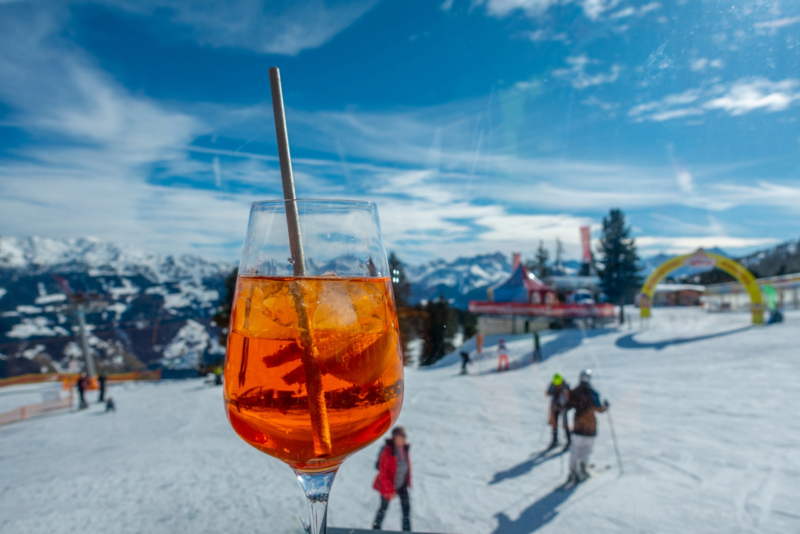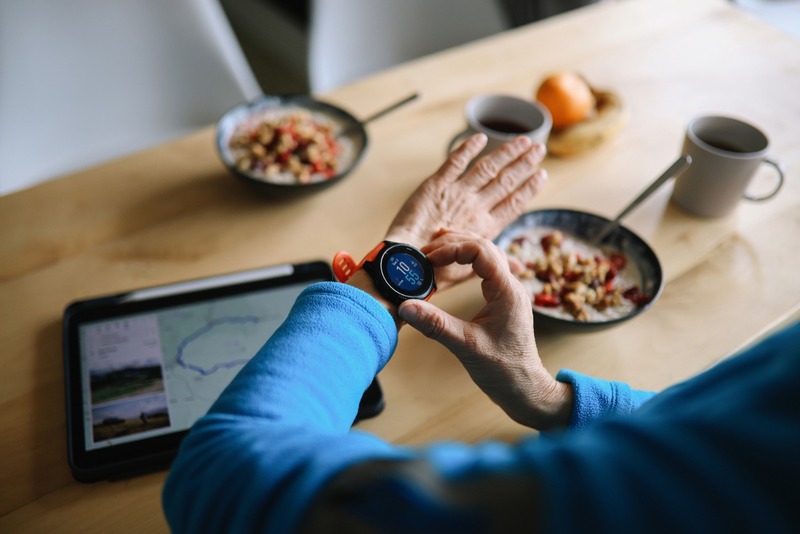News
Vail Daily Health Feature: Have a Surgery-Free Ski Season
At age 39 local skier Ian Gray had never broken a bone or torn a ligament. It wasn't until last season on one of Vail's biggest powder days of the year when Gray found himself seriously injured for the first time in his life.
It was Feb. 15 and the weather had really taken a turn for the worst he explained. We were dropping into Yonder and I was going pretty fast. I couldn't see anything and was relying on my knees to cushion the turns.
Suddenly Gray's fresh tracks turned to a sheet of solid ice leading into an abrupt and involuntary mid-air move followed by a crash landing onto the side of mogul. When only one ski released and the other was tangled beneath him Gray said he sensed the severity right away.
For the record it was extremely painful he said. I screamed three times once for the pain once again for realizing how much it sucked and the third scream was because I had torn my ACL ... I just knew it.
Gray did in fact tear his right ACL called the anterior cruciate ligament as well his MCL the medial collateral ligament and had a fair amount of meniscus damage.
Dr. Robert LaPrade at The Steadman Clinic recommended he take some time before surgery to see if the MCL would heal. When Gray returned to the clinic six weeks later the MCL had healed and he went into therapy at Howard Head Sports Medicine to start on some exercises to keep his quadricep and the muscles around his knee from going into atrophy.
Gray's ACL surgery that followed as well as his continuous road to recovery seems a story all too common for this area's local and visiting skiing and snowboarding community.
Thankful for therapy
Matt Mymern physical therapist certified sports specialist and certified strength and conditioning specialist at Howard Head works with clients like Gray on a regular basis not to mention his traveling work as a physical therapist with the U.S. Women's Ski Team.
Mymern said the top five overall ski and snowboard injuries are shoulder dislocation wrist injuries skiers thumb MCL injuries and ACL tears. He said it's a combination of the conditions of the slopes as well as the physical condition of the skier that often determines the likelihood for injury.
With a majority of the upper extremity injuries you have to think about what precedes the fall that hurts a shoulder or wrist he said. This typically has to do with the conditioning of the lower body and core.
Leg injuries can be a result of a lack of conditioning as well although sometimes the fall just seems out of the rider's control.
Gray said Howard Head was technically sound and emotionally supportive with his recovery and he paid specific mention and gratitude to the Vail Ski Patrol for their professional and efficient work in getting him into the hands of help.
If you go to Howard Head with the intention to heal you're going to heal correctly he said. They know what they are doing as they deal with this more than anybody they have such an amazing amount of compassion and were extremely supportive.
Within about two and a half months of his surgery Gray said he was hiking with his brace. Three months after surgery Gray started doing yoga.
A lot of the positions we were doing in yoga were almost exactly what I had been prescribed by Howard Head for my exercises he said. The correlation was amazing.
Gray's desire to get back to his pre-injury condition has kept him complementing his therapy work with hiking swimming and yoga.
A lot of recuperation for a 40 year old is different than for a 20 year old Gray said. To get back out and ski I can't be at 80 percent I have to be at 100 percent. The therapy exercises are geared from the get-go to move in that direction.
Start your ski legs
Andy Martin and Paul Bersagel are personal trainers at the Vail Cascade's Aria Club and Spa. The club is already in the middle of its six-week ski conditioning program where Martin and Bersagel are both working hard to get clients strong and ready to ride.
A lot of this work combines compound movements so that you're emphasizing your core and having to transfer the motion in your upper and lower body Martin explained. The more stuff you can do to strengthen and stabilize the core the less likely you are to fall and most injuries are falling injuries.
Aria's personal trainers are certified in the Functional Movement Screen a test administered to clients to help identify where somebody may have an imbalance or a deficiency that may lead to an injury.
There are scores for the FMS and if you are under a certain score (which is 14 on this test) there's evidence that shows you're at more risk for injury Bersagel said. In our ski conditioning program we can identify those deficiencies early on and help to bring up each individual's score.
Aria Club's annual six-week program is designed up for all levels with a goal of getting participants strong and stable.
We start by emphasizing and teaching certain movements and certain techniques Martin explained. And once we get to a point where we feel confident and everyone is moving correctly then we start to increase the overall workload and get people into the conditioning phase. We're trying to make sure everybody's safe first and then they get in shape.
Bersagel said prepping for the season is important but a maintenance program is essential as well.
Right when Vail opens we're talking about one to 10 runs he said. That's not the same type of skiing you're going to be doing in January or late-December.
Mymern Martin and Bersagel all recommend consulting trained professionals before beginning a personal exercise program.
Some exercises are good for some and not for others Mymern said. We just want to make sure the local population is healthy and able to begin an exercise program ultimately we are trying to prevent injuries we don't want anyone to get hurt trying to do exercises.
5 moves for injury prevention
Martin and Bersagel put together five moves to do at home or at the gym. Questions about exercises should be addressed with a fitness professional.
1) Squats and squat jumps
Make sure your weight is in your heels and keep your ankles knees and hips in line. Try to get your back angle to match your shin angle. The heels stay in contact with the ground to ensure that the glutes are activated through the squat. Do 15 to 20 reps three or four sets.
The stronger you can be in your squat variations the stronger you can get your glutes Martin explained. The less pressure you'll put on your knees and the less wear and tear they'll take over the course of the season.
Form is the same in squat jumps as in standing squats just with an added jump. Bersagel said to focus on landing softly and not as much on how high you jump. This move emphasizes eccentric muscle absorption where the muscles are slowing you down. Do 10 to 15 jumps two to three sets.
Form is key Martin said. Maybe do it in front of a mirror to check form because you don't want your knees falling in.
2) Elevated split squat
Elevate your rear leg and everything on the front leg should stay in one line. Keep your heels on the ground and drop yourself down to where you feel a stretch in the quad and hip flexor of the rear leg. Drive up and repeat. Do 10 to 15 reps on each side two to three sets.
You're always going to feel your quad when you do these lower body exercises Martin said. You should also try to feel your glute activate to slow you down and stop you for the eccentric movement and then let your quads and glute bring you back out of it in the concentric direction.
3) Plank
The plank hold depends on the individual person Martin said. Essentially you want someone to hold it until form breaks.
Stay in plank on your forearms for any time between 30 to 90 seconds depending on your level of ability. Do two to three sets.
4) Bridges
Squeeze your glutes to stabilize your hips as you lift them up. Make sure your knees are over your ankles hip-width distance. Bersagel said the extension on these moves is key keeping a straight line between your chest and knees. Include single leg variations by keeping hips up and lifting one leg high at a time helping to strengthen the backside of the core the posterior chain. Do 10 to 15 reps with a two or three second hold at the end of each two to three sets.
5) Lateral slides
Maintain a low athletic stance as you shift from one leg over to the other leg creating lateral hip stability. Have blocks on either side of your feet not too far away. This move emphasizes being comfortable having your weight on one leg. Do 10 to 15 reps on each side two to three sets.
In addition to the five exercises listed here Mymern recommended adding a balance squat with a half ball or balance disc. He said to start with a double leg squat and then progress into single leg squats.
Martin said minimizing your risk for injury on the mountain is about avoiding those couple of weeks at the beginning of the season when you are still getting your legs underneath you.
If you're in really good shape already and then you go out and after two weeks you hurt yourself then it doesn't matter what kind of shape you're in anymore he said.
More News
-
New!
More

First Chair to Last Call: What Does Alcohol Really Mean For Your Health?
In nearly every Colorado ski town, some iteration of the neon sign blares its play-hard-party-harder anthem. It’s a not-so-subtle nod to mountain party culture, a lifestyle that normalizes combining sports and outdoor adventures with heavy drinking and partying. In Eagle County, après culture, high-altitude living and outdoor performance have coexisted for as long as locals have been sliding on snow. But how much is too much at altitude? And what role do social support systems play in helping residents find balance?
-
New!
More

Counting More Than Steps: How Wearables Can Help (or Hinder) Your Health
From step counts to sleep stages, heart rate variability to blood sugar spikes, wearable devices are giving us a front-row seat to what’s happening inside our bodies. Strapped to wrists, slipped onto fingers or wrapped around our biceps, wearables like the Oura Ring or Whoop strap promise insight and advice in the quest for better health.
-
More

Cass Barham and Sarah Crabtree Honored As Recipients of Vail Health Elevate Award
Cass Barham and Sarah Crabtree, both lab techs at Vail Health Hospital, have been named recipients of the Vail Health Elevate Award. Vail Health created the Elevate Award in June 2022 to give patients and their families an opportunity to nominate and thank employees who have touched their lives in some way.
